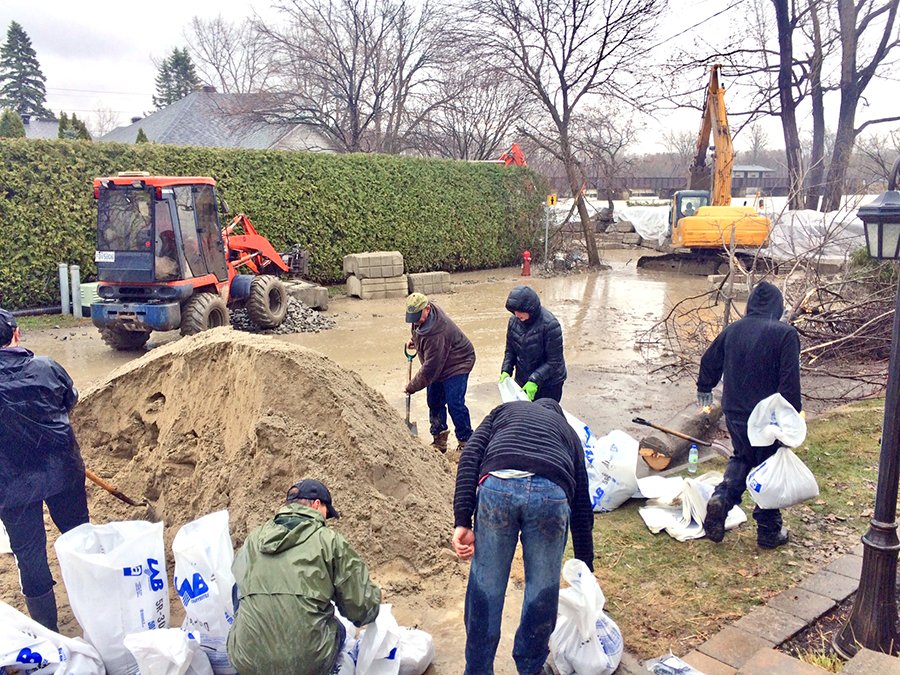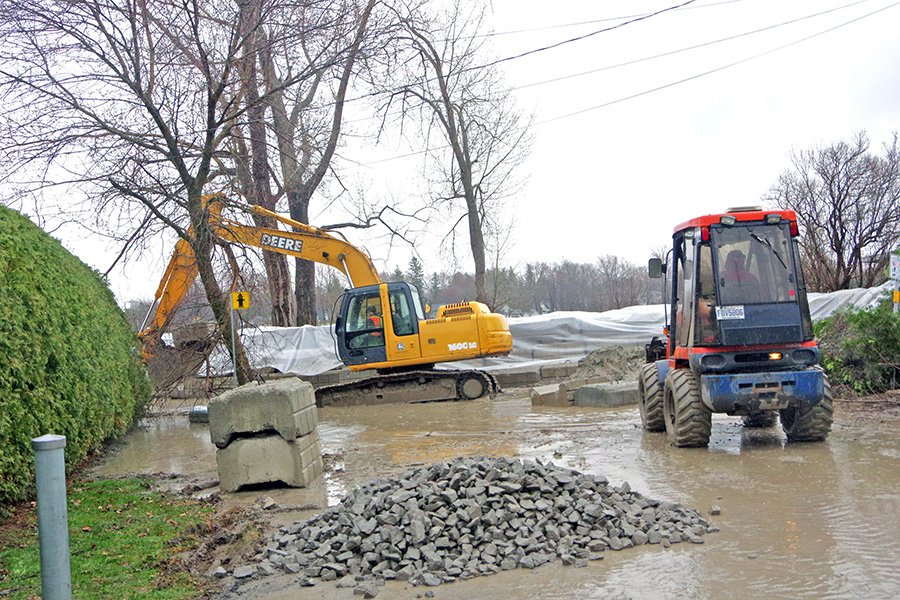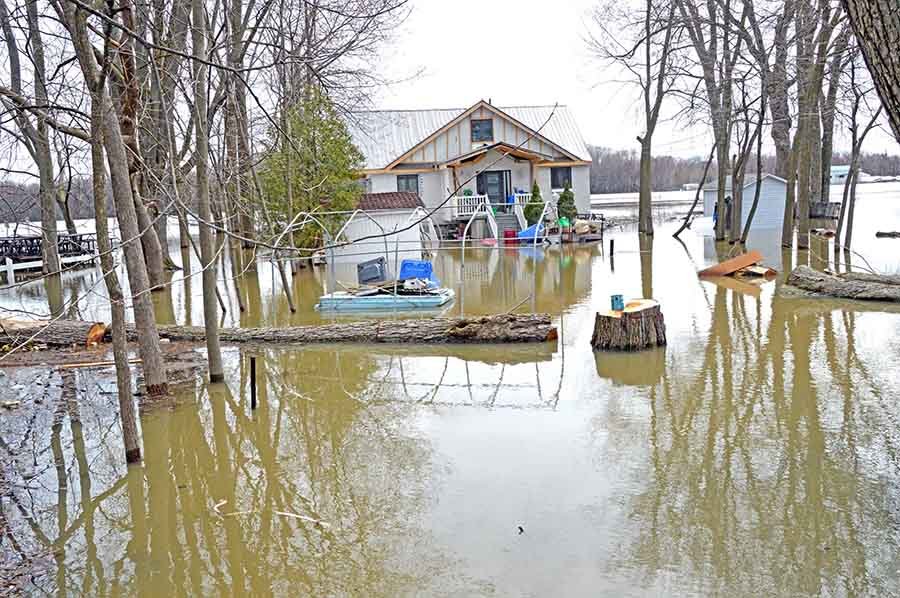
Martin C. Barry
Provincial, municipal and public safety officials on the North Shore remained on high alert this week as spring flooding – bringing together melted snow runoff from the Laurentians with days of steady rain – combined to create one of the biggest weather-related crises ever seen in Quebec and eastern Canada.
In undoubtedly the hardest hit area of the North Shore – Saint-Marthe-sur-le-Lac on the edge of the Lake of Two Mountains – public works crews, police and homeowners fought back against a rising surge of water that had been held back until then by a 43-year-old dike that municipal officials had planned to repair.
Take a look at the
featured Local Savings
at the bottom of this page!
Massive water surges
It all could be blamed on melting snow in mountainous regions north of the Outaouais, Laurentian, Lanaudière and Mauricie regions that created unprecedented flooding south of there. There were also massive surges on several of the province’s waterways leading into an already waterlogged corridor between the cities of Gatineau and Trois-Rivières.
Last week and this week, North Shore public safety and public works employees were on alert, keeping a steady eye on the situation on a 24-hour basis, in order to catch potentially unforeseen developments before they happened.


Shelter offered at DM’s arena
As early as last weekend, meteorologists and experts in river and watershed flows were predicting that levels in the water bodies surrounding the Laval, Montreal and North Shore regions would grow higher than what they were in 2017 when flooding problems last assailed the area. As many as 10,000 Quebecers are believed to have been forced out of their homes by this year’s flooding.
According to reports, more than half of those were in Sainte-Marthe-sur-le-Lac. More than 6,600 homes across Quebec were flooded, while the owners of more than 3,400 homes were unable to return to their houses because flood waters cut them off. Flood victims from Sainte-Marthe were offered shelter at the City of Deux-Montagnes’ municipal arena as well as at the Deux-Montagnes branch of the Royal Canadian Legion.
Unanswered questions
In the meantime, serious questions are being raised about the state of the four-decade-old dike in Sainte-Marthe-sur-le-Lac leading up to its rupture. Although the town had been advised last year by expert consultants to undertake a program of improvements to the structure, there is disagreement as to whether Sainte-Marthe officials applied soon enough to the Quebec Environment Ministry for a permit, which was pending at the time the dike broke.
Although Sainte-Marthe’s permit was still pending, Quebec Environment Minister Benoit Charette (who is the Coalition Avenir Québec MNA for Deux-Montagnes) announced this past February that following a fairly long delay (much of it during the term of the previous Liberal government), his ministry finally decided to issue a permit to the City of Deux-Montagnes to build a new dike along parts of its waterfront to prevent a recurrence of the floods in Deux-Montagnes in 2017.


Deux-Montagnes learned from 2017
That project had yet to be completed when the 2019 floods struck. However, as a preventive measure taken following the 2017 floods, the City of Deux-Montagnes stocked up on materials, including hundreds of concrete blocks as well as waterproof rubber sheeting, in order to build a temporary dike along key areas of its waterfront. The strategy appears to have worked, as there have been no reports of serious flooding in Deux-Montagnes which is located immediately next to Sainte-Marthe.
In Deux-Montagnes, the city reported on its web site earlier this week that the level of Lake of Two Mountains was down to 24.73 metres since the previous morning. The precipitation forecasts were revised downward and a slight decrease in the water level to 24.68 metres was anticipated for Thursday.
Flood warning status
In the Town of Rosemère, officials maintained on their web site this week that a flood risk warning was still in effect. While reporting that there was a slight decrease in the level of the Mille Îles River, it was still considered very high, which was why Rosemère was maintaining a state of alert as to the risks of floods in certain sectors of its territory.
That being said, a Sainte-Marthe resident is hoping to find others who are willing to consider launching a class-action negligence lawsuit against their municipality. “This is a big injustice towards the residents. This is unacceptable,” Patrick Hardy of 23rd Ave. in Sainte-Marthe told a Montreal daily. The lifelong resident of Sainte-Marthe maintains there were signs the dike was weak long before it broke and let in the floodwaters.















